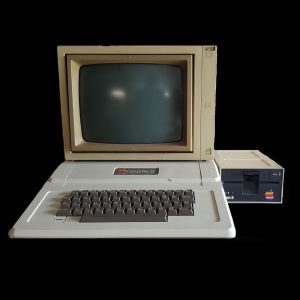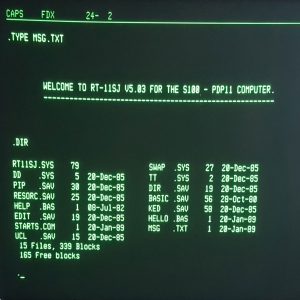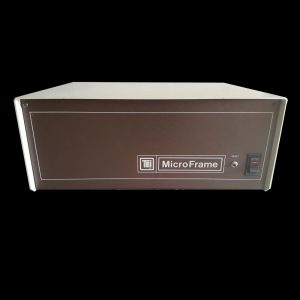
2650 Mini Computer
Posted by musovern on Feb 15th, 2020 in 2650-mini-computer, Vintage Computers | 0 comments A remake of the EA 2650 mini system In May 1978, Electronics Australia described a small development board based on the Signetics 2650 microprocessor. For many people in Australia (the author included), this was the first computer that was cheap enough to buy and build even if you were a student or beginner. This update to the simple and elegant design of the original provides a new PCB that evokes the original while adding modern alternatives to some of the hard-to-get parts of the original. The original article text is included at the end of this document The new board has three options over the... Read More...
A remake of the EA 2650 mini system In May 1978, Electronics Australia described a small development board based on the Signetics 2650 microprocessor. For many people in Australia (the author included), this was the first computer that was cheap enough to buy and build even if you were a student or beginner. This update to the simple and elegant design of the original provides a new PCB that evokes the original while adding modern alternatives to some of the hard-to-get parts of the original. The original article text is included at the end of this document The new board has three options over the... Read More...
Apple II Plus
Posted by musovern on Feb 3rd, 2020 in Apple, Vintage Computers | 0 comments
The Apple II+ was the successor of the Apple II.
It was fully compatible with the Apple II, however, has some new features: a new ROM containing the AppleSoft Basic (floating point version written by Microsoft), a new auto-start (store in ROM) for easier start-up and screen editing, 48 KB RAM, text modes were the same as the
Apple II, but the graphic modes were enhanced. They’re the same as the Apple 2e: 16 colors with low resolution and 6 colors with high resolution. In fact the 6-color mode was also available on the Apple II since the revision 1 of the motherboard.
S100 PDP11
Posted by musovern on Nov 20th, 2019 in PDP11 | 0 comments
After many Months of work I now have a S100 PDP11 system working and running RT11-v5.03SJ. It’s currently sitting in my 9 Slot Test rig.
Read More...TEI MicroFrame
Posted by musovern on Nov 20th, 2019 in TEI-MicroFrame | 0 comments This is my TEI chassis with 12 slot backplane, Have now recapped the power and changed it over to 240 volt. Will add the Z80 that is sitting on top or a 8080A CPU board not sure yet with RAM/EPROM board with a serial board for another S100 system. Read More...
This is my TEI chassis with 12 slot backplane, Have now recapped the power and changed it over to 240 volt. Will add the Z80 that is sitting on top or a 8080A CPU board not sure yet with RAM/EPROM board with a serial board for another S100 system. Read More...
IBM XT 5160
Posted by musovern on Nov 17th, 2019 in IBM XT5160 | 0 comments The IBM Model 5160 was as you might guess, a more powerful version of the IBM PC Model 5150. The ‘XT’ designation distinguished it from the 5150 ‘PC’. It was introduced in 1983 and, like it’s predecessor the IBM 5150, it was available with either a CGA colour video card or a monochrome (text-only) MDA video card. It shipped with more RAM on the motherboard and had 163W power supply to better support the supplied 10MB or 20MB hard disk drive (increased from the 93W PSU used in the 5150). The (mostly unused) tape port mysteriously disappeared – a sign of the times!... Read More...
The IBM Model 5160 was as you might guess, a more powerful version of the IBM PC Model 5150. The ‘XT’ designation distinguished it from the 5150 ‘PC’. It was introduced in 1983 and, like it’s predecessor the IBM 5150, it was available with either a CGA colour video card or a monochrome (text-only) MDA video card. It shipped with more RAM on the motherboard and had 163W power supply to better support the supplied 10MB or 20MB hard disk drive (increased from the 93W PSU used in the 5150). The (mostly unused) tape port mysteriously disappeared – a sign of the times!... Read More...